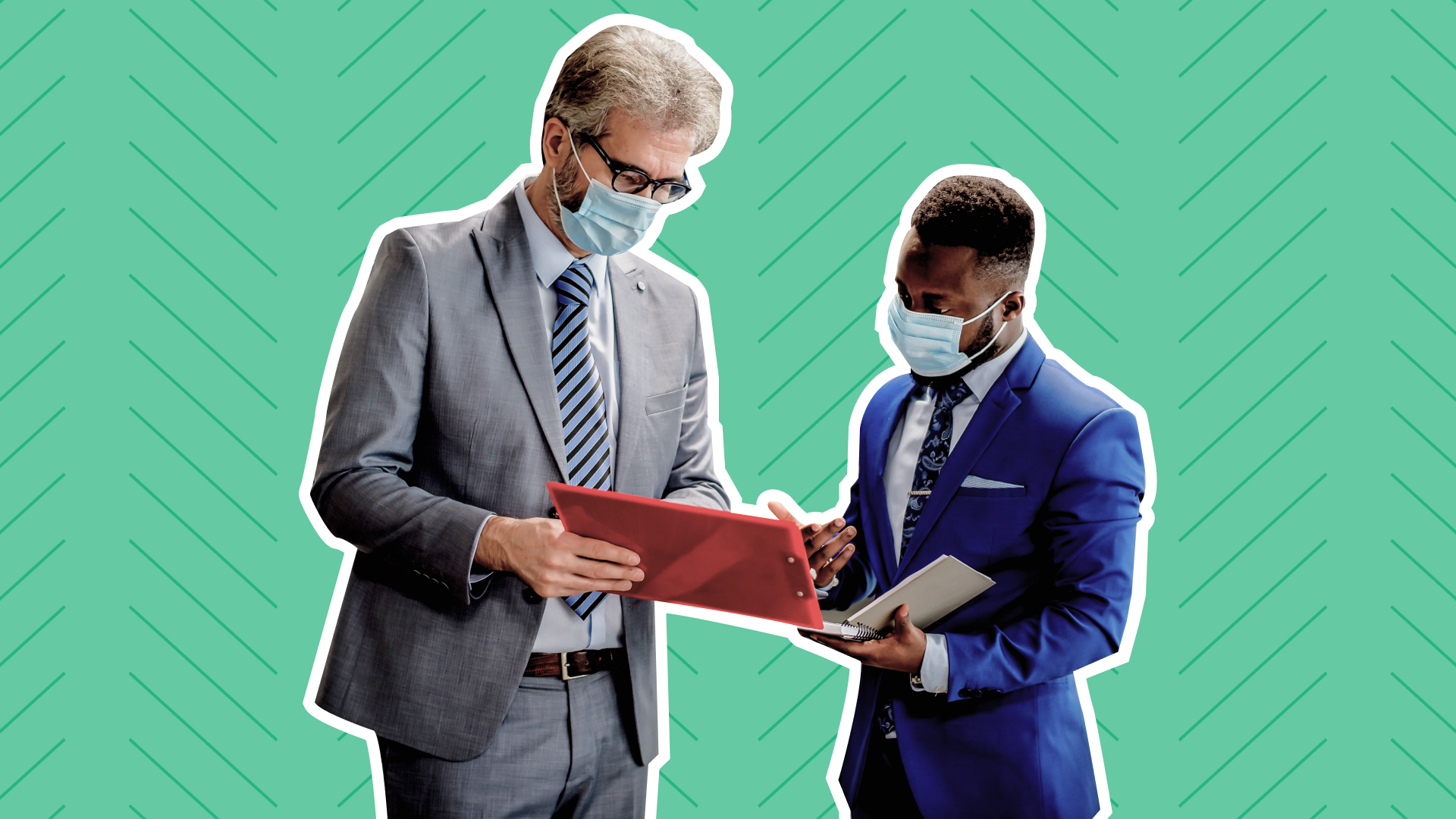HR Leadership in 2022: Chief Medical Officers in a Post-Pandemic Workplace
How do small businesses sustainably manage all the growing health and safety responsibilities they face? One answer is hiring a Chief Medical Officer. We'll cover the ins and outs of this role for businesses, irrespective of industry or vertical.

If you’re keeping a close eye on recent business trends, you might have noticed an interesting development in C-suites across the nation over the last two years.
Starting last year, there began a noticeable rise in titles like Chief Health Officer, Chief Wellness Officer, and Chief Medical Officer cropping up across all kinds of industries and verticals — not just the healthcare industry where these roles were already common. (A trend found by workforce analytics firm Burning Glass Technologies showed that Chief Medical Officer job postings increased by 18.75% from 2019 to 2020.)
Like so many aspects of modern life over the last two years, the title of this position is hardly agreed upon (we’ll call it “Chief Medical Officer” for the purpose of this article), but the responsibilities bear some similarities from role to role.
In certain organizations and companies, the Chief Medical Officer’s role has expanded to include employee physical and mental health, customer safety, and post-pandemic planning, like the return to the office.
Regardless, these job functions that have risen to prominence over the last few years beg the question: Will Chief Medical Officers (CMOs) be around forever? Do chief medical officers have a place in a post-pandemic workplace? Yes and no. To know for sure, it’s necessary to understand what shapes a Chief Medical Officer’s role.
If you’re a smaller business operation, maybe your company is offloading these duties onto its HR leaders. Or maybe your company, like many others, is expanding its C-suite to make room for a permanent Chief Medical Officer. Whatever the case, consider how these responsibilities can be handled within your organization.
What Do Chief Medical Officers Do?
The role of a Chief Medical Officer generally involves overseeing several tenets of workplace compliance and culture where they intersect with employees’ and customers’ wellbeing. Think of the CMO as a steward of health and safety.
Employee Health
The pandemic underscored the need for a C-level officer who could be accountable for workplace safety, but employee health protocol extends far beyond COVID-19 measures.
For some industries, OSHA regulations already placed an emphasis on employee safety in the workplace. But for many office-based workplaces, the concept is fresh. Outside of COVID-19 preventative measures, what does employee health and safety look like in the workplace?
The answer has only become more complex, as the notion of “workplace” has shifted enormously in the last two years. Where the office once stood as the battleground for workplace safety, it’s now ceded to the “home office.” The question then becomes: What does employee health and safety look like for remote or hybrid teams?
For starters, an ergonomic home office setup plays a crucial role in the health and wellbeing of remote or hybrid workers. Injuries like carpal tunnel or eye strain are only more common with increased screen time and less-than-ideal home office setups.
A Chief Medical Officer might be involved in mitigating these types of injuries, by allocating and providing ergonomic home office resources, such as large-screen monitors, office chairs, ergonomic mouse pads, and so on. Ultimately, this is a culture play as well: standardizing the office experience for both in-person and remote workers.
Customer Safety
If your business has a brick and mortar retail location or if you directly interact with customers when transacting business, you’re likely required to follow state and local COVID-19 precautionary measures. For that reason, CMOs may be needed to keep a pulse on emerging COVID-19 regulations, translate COVID-19 information and guidelines, and distill those regulations into understandable, actionable policies.
A Chief Medical Officer might be heavily involved in ensuring these retail spaces or customer interactions comply with COVID-19 regulations, by strategically designing a COVID-friendly layout for your physical space(s), establishing COVID-19 workplace policies, or both. A question like, “how should a worker deal with a customer who refuses to wear a mask?” might be in the domain of a Chief Medical Officer.
To that end, Chief Medical Officers may also be responsible for ensuring physical spaces have the necessary personal protective equipment (PPE), like masks and hand sanitation stations, for workers and customers alike.
Mental Health
Employee health doesn’t refer to physical health alone; it also concerns employees’ mental health and wellness. And if the last few years — including the Great Resignation — have taught us anything, the mental health of your team may determine whether you have a team at all.
In a remote or hybrid work setting, caring for your team extends far beyond offering the occasional time off. Your Chief Medical Officer could look for ways to support team members who are feeling burnt out or dealing with isolation.
Mental health, of course, is impacted by all sorts of environmental factors. As an employer, you can’t always be there for every stressor in an employee’s life. But with an Employee Assistance Program (EAP), you can provide access to important resources that help employees with a variety of issues in and out of the workplace, including mental health services and help coping with personal, family, work, and financial issues.
Post-Pandemic Planning & Return to Work
Another area where your Chief Medical Officer might lend their expertise is planning for a post-pandemic return to the office. The proverbial “return to work” looks quite different for every business, as many white-collar or office-based businesses have transitioned to a remote workplace indefinitely.
If you’re gearing up for a hybrid workplace, your Chief Medical Officer could assist in preparing a physical workplace for team members who are ready to meet and work together in-person.
Preparing a physical workplace for an influx of people, in light of persistent new strains of the COVID-19 virus, is a job in and of itself. But the Chief Medical Officer could also determine how to communicate workplace return protocol to employees, organize the actual return (e.g., stagnated returns), and continually make adjustments to address changing COVID-19 regulations and guidelines.
It’s a lot to handle, but one place to start is issuing a Return to Work pulse survey to your employees. Start a dialogue with your team to figure out whether a return to the office makes sense for your team, and if so, who’s interested in returning. When crafting your return to work strategy, you should remember:
No two return to work strategies will look exactly the same.
Your return-to-work policies and procedures should reflect requirements and recommendations by federal, state, and local health authorities.
The health, welfare, and safety of your employees and their families should always come first.
Conclusion
Many of your company’s leaders likely adopted the job functions of a Chief Medical Officer over the last year. But as you plan for the future and consider where to best allocate your resources, you may consider creating a role for a full-time Chief Medical Officer to ensure you’re following proper health and safety guidelines across all areas of your business.
A role like this might seem groundbreaking at first, but it’s hardly a transformation for modern day businesses, considering how their workplaces have already become increasingly more flexible, strategic, and safety-oriented.
Looking for other ways to take care of your team? Start by offering access to better health insurance, eye-catching employee perks, and around-the-clock benefits support — all through Justworks.
Learn more with Justworks’ Resources
Scale your business and build your team — no matter which way it grows. Access the tools, perks, and resources to help you stay compliant and grow in all 50 states.






